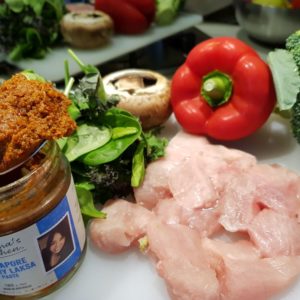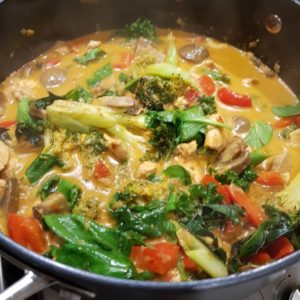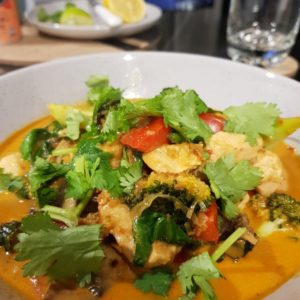Don’t Dare Call it a Diet!
Have you seen the term ‘WOE’ bandied about a lot lately? It stands for Way Of Eating because heaven forbid, you should say you’re on a ‘diet’! The dreaded ‘D’ word – or four-letter word – is all but outlawed in some circles on social media but hey, the fact that we eat at all means we follow a diet. Yours may be completely wholesome, natural and organic or it might consist of all things sugar and spice, but however you eat, that’s your diet. Meanwhile, if you follow an eating trend of some sort, your ‘tribe’ (thanks, Paleo Pete Evans) will prefer to call it a WOE. Fair enough, right?
These days, how we eat is often less about weight loss and more about health and wellness. It also refers to how we belong to a community based on what we eat. The gluten free movement has been swelling for years. I remember an old family friend from decades ago, ‘Aunty Hazel’, who was diagnosed with coeliac disease. She used to bake her own bread and biscuits and eat rice with the bolognese sauce my Mum cooked up in our Italo-Australian home. Now, eating gluten free foods is also a choice for some people who may not have been diagnosed with any kind of gluten intolerance but who prefer avoiding how gluten makes them feel.
Then we have the FODMAP community. ‘FODMAP’ stands for Fermentable Oligosaccharides, Disaccharides, Monosaccharides and Polyols. Big name, big deal for those who follow it. For anyone suffering from Irritable Bowel Syndrome (IBS), eating FODMAP-friendly foods can make all the difference to their symptoms.
Paleo followers eat all kinds of meat, fish and seafood, eggs, vegetables and (minimal) fruits plus healthy fats and oils like olive oil, coconut oil, walnut, macadamia and flaxseed oils. No dairy, no gluten, no sugar, no processed foods, no grains.
Low Carb High Fat, also known as the ketogenic diet is based on consuming extremely low carb (say, less than 20 g of carbohydrates per day) and a good proportion of healthy, quality fats for energy instead. The carbs you do eat come from vegetables as fruit is pretty much left out of LCHF. You also don’t eat starchy vegetables. Basically, potatoes, sweet potatoes, carrots and beetroot should be eliminated, along with things like lentils, chick peas, beans, corn and peas. But you get to enjoy loads of quality meats, fish, seafood, eggs and bacon with your nutrient-rich vegetables and salads. Cook with coconut oil or other healthy oils and enjoy your dairy. Munch on cheeses, dip veggies into cream cheese or yoghurt, have cream in your coffee and load up on butter!
Vegans and vegetarians enjoy their meals every bit as much as anyone who follows the above ways of eating. Whether for ethical and moral reasons or because they simply feel better when they don’t eat meat (or for vegans, no animal products at all), their choice is completely valid.
How does Latasha’s Kitchen fit into these WOEs?
You’ll be delighted to know that the first box that Latasha’s products tick is ‘all natural’. You won’t find anything artificial or unnecessary in any of her jars or bottles; no matter what WOE you follow, that should be a priority for all of us. That means no fillers, no bulking agents, no citric acid, no colours and absolutely NO MSG!!
Many of Latasha’s products tick multiple boxes and you’ll see the symbols next to each listing. Most are suitable for vegetarians, pescatarians, vegans and coeliacs.
Every product on Latasha’s website is accompanied by detailed nutritional information, a list of ingredients and full disclosure about any allergens such as nuts, crustaceans and dairy so you can make an informed decision.
Authentic, full-flavoured, clean eating
When you buy products from Latasha’s Kitchen, you can be absolutely sure that you are buying quality. Locally made right here in Australia using Australian ingredients, every jar and bottle contains ingredients you could go to the market and buy right now. Because they don’t contain fillers of any kind, you’re getting real value for money … intense flavour in every spoonful.
Tip: Konjac noodles
If you’re avoiding gluten or trying to minimise your carbohydrate intake, take a look at konjac noodles. They are available in supermarkets and can be used in place of rice, noodles and pasta. Made from the konjac root which is rich in vitamins, minerals and fibre, konjac noodles are easy to prepare, flavour-neutral, don’t spike blood sugar levels and contain zero calories! They come in various shapes including ‘rice’, ‘lasagne sheets’, ‘fettuccine’, ‘noodles’ and ‘spaghetti’ so you can use them however you like.
What I cooked recently
I cooked a Singapore Chicken Curry Laksa recently to use up some vegetables from the fridge and to warm up on a particularly cold night. I used chicken breast but you can easily substitute with thigh fillets or even pork, beef or turkey. This meal is naturally gluten free, dairy free, minimal-carb (if you use konjac noodles – I ate mine without noodles or rice) and refined sugar free. Enjoy!
Singapore Chicken Curry Laksa
Ingredients (Serves 2)
- 1 tbsp oil or coconut oil
- 500 g chicken (breast or thigh fillets), diced or cut into strips
- ½ leek (discard tough, dark green ends), thinly sliced
- 2 tbsp Latasha’s Kitchen Singapore Curry Laksa Paste*
- 1 red capsicum, cut into strips
- 2 big Portobello mushrooms, sliced
- ½ broccoli, tough parts of stalk discarded and cut into smaller florets
- 500 ml chicken stock
- 200 ml (½ can) coconut cream
- Good handful of leaves (I used spinach and kale)
- 1 cup cooked rice or konjac noodles
- 1 lime, quartered
- Handful of coriander for garnishing
- SINGAPORE CHICKEN CURRY LAKSA
Method
- Heat the pan, add the oil then fry the sliced leeks until translucent and soft. Add Latasha’s Kitchen Singapore Curry Laksa Paste and allow to warm through to release the aromas. Add the chicken to the pan and coat in the curry paste.
- Add the capsicum and mushrooms to the pan then add stock and coconut cream. Bring to the boil then turn down to simmer. Add broccoli and simmer for 10 minutes then at the very end, before serving, throw in the leaves and stir through until wilted.
- To serve, add cooked rice or konjac noodles to each bowl then simply ladle the laksa into a bowl, being sure to create a good balance of chicken, vegetables and liquid. Garnish with lime wedges and coriander so each person can add to desired taste.
*NOTE: I prefer my dishes with tons of flavour so I use quite a lot of Latasha’s pastes in my cooking. For those who prefer a milder taste, simply use less paste. Latasha recommends 1 tbsp of paste for a dish that feeds two people and contains 500 g of your preferred protein.




Join #latashaskitcheners
Join Latasha's personal mailing list for delicious recipes, exclusive promotions and behind the scenes update direct to your inbox.